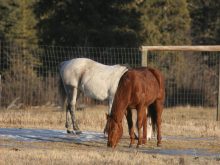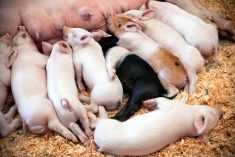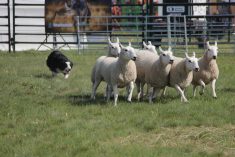RED DEER – Lana Love wasn’t an activist until she heard about a proposed 80,000 hog farm in her community.
“I just got mad and nobody else was willing to say anything,” she said in an interview.
She led the Flagstaff Family Farm Promotional Society after Taiwan Sugar Inc.’s plans became public to build hog barns on five farms in the County of Flagstaff.
The society gathered 1,200 signatures on a petition protesting the development. After three years of hearings and a court challenge, Taiwan Sugar’s proposal was stopped because two of the sites did not comply with minimum distance separation rules.
Read Also

Why selenium is still an important factor in horse health
Selenium is an essential equine trace mineral that supports antioxidant defense, muscle integrity, immune function, metabolism and thyroid activity.
Minimum distance separation is a buffer zone based on the number of animals on a given site and their distance from the nearest neighbour’s home.
The company still owns the land in the county and it could apply for a development permit with the Natural Resources Conservation Board, which now governs these operations in Alberta.
“The only regret any of us have about our battle is the loss of friends and neighbours, and sadly, even families were torn apart,” she said at a meeting of the Society for Environmentally Responsible Livestock Operations.
About 75 people came to the Red Deer meeting to learn more and share their frustrations with the spread of intensive livestock development.
SERLO formed after Taiwan Sugar applied to build in the County of 40 Mile in southeastern Alberta. When refused, the company tried again in Flagstaff.
Some of those attending the SERLO meeting said they regretted the provincial decision to move the application process to the NRCB, a government appointed body that began overseeing the Agricultural Operations Practices Act in January 2002.
Edmonton lawyer David Reay said the new system is far from perfect.
He said the NRCB is in a conflict because it helps people draw up applications, reviews them and then enforces the regulations.
The new process has also limited the courts’ role and the kinds of challenges that are allowed.
“The courts are very limited in what they can do generally, in that they will only look at whether the tribunal followed the appropriate procedure,” Reay said.
Lawyer Jordan Harink said going to court is expensive and judges want substantiated proof that there are ill effects from odour, dust or noise.
“You are not going to stop every operation unless the legislation is changed,” she said.
However, the lawyers agreed the old system of giving municipalities full authority to approve these farms was flawed. Regulatory inconsistency across the province and limited expertise at the municipal level to properly study the applications resulted in confusion.
Reay said many people living near these developments are frustrated with what they see as a pro-business development government. He is also concerned there is not enough public health expertise involved in approving applications or a sound emergency plan in the event of a catastrophe such as a ruptured lagoon.
He advised SERLO to look at legislative changes and make its opinions known, because the law restricts the powers of the NRCB.
The Agricultural Operations Practices Act is undergoing a legislative review this spring.















